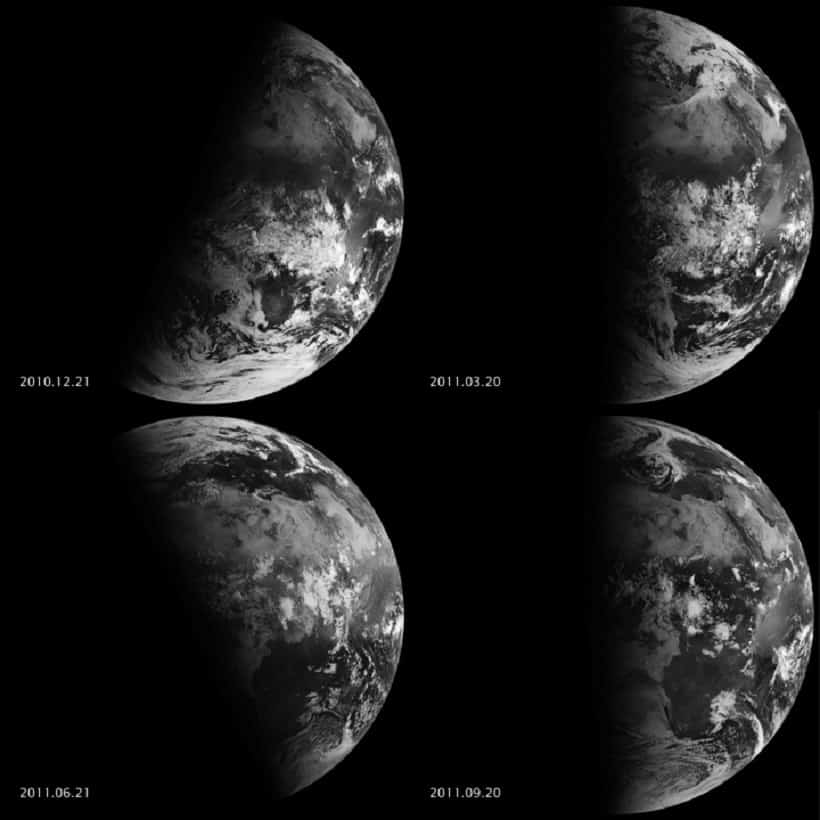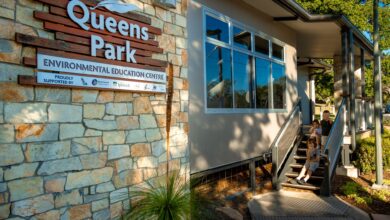The four changes of the seasons, related to the position of sunlight on the planet, are captured in this view from geosynchronous Earth orbit by EUMETSAT’s Meteosat-9 satellite. On March 20 and September 20, the terminator (the line between night and day) is a straight north-south line, and the Sun appears to sit directly above the equator. For a full explanation see the blue box below. Source: NASA images and animation by Robert Simmon, using data ©2010 EUMETSAT.
Warmer days are in our sights as we move away from mid-winter today.
Today (Thursday 21 June 2018) is the shortest day of the year. From today the days will slowly start to get longer. The sun rises at 6.38am and sunset is at 5.02pm.
The exact moment of the solstice is at 8.07pm and that is when the earth starts to tilt back the other way.
Let me explain.
Imagine sticking a big skewer through an apple from the top (where it comes off the tree) to the bottom, through the centre. That is the earth’s axis and the top is the North Pole.
Imagine a torch lighting the apple up from the left side. That is the sun and it never moves.
If you take the top of the skewer and tilt it 23.5 degrees, towards the torch so the apple looks like it is about to topple over, that is what Earth looks like during our winter solstice. The top of the earth is getting all the sunlight and the southern hemisphere are getting all the long nights.
Clear as apple juice?
If you think the 10 and a half hours sunlight a day is bad, keep the scientists down in Antarctica in mind. The sun set in March and won’t rise again until September. They are in the middle of a polar night which means the sun doesn’t rise at all.
The big take away for us here in Ipswich is that you can enjoy a sunrise without having to wake up too early. And soon the southern hemisphere will hog the sunshine again and longer, warmer days are on their way.

The Spinning Enhanced Visible and Infrared Imager (SEVIRI) on EUMETSAT’s Meteosat-9 captured these four views of Earth from geosynchronous orbit.
The images show how sunlight fell on the Earth on December 21, 2010 (upper left), and March 20 (upper right), June 21 (lower left), and September 20, 2011 (lower right). Each image was taken at 6:12 a.m. local time.
On March 20 and September 20, the terminator is a straight north-south line, and the Sun is said to sit directly above the equator.
On December 21, the Sun resides directly over the Tropic of Capricorn when viewed from the ground, and sunlight spreads over more of the Southern Hemisphere.
On June 21, the Sun sits above the Tropic of Cancer, spreading more sunlight in the north and turning the tables on the south.
The bulge of our spherical Earth blocks sunlight from the far hemisphere at the solstices; that same curvature allows the Sun’s rays to spread over more area near the top and bottom of the globe.
Source: NASA


5